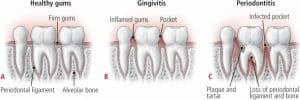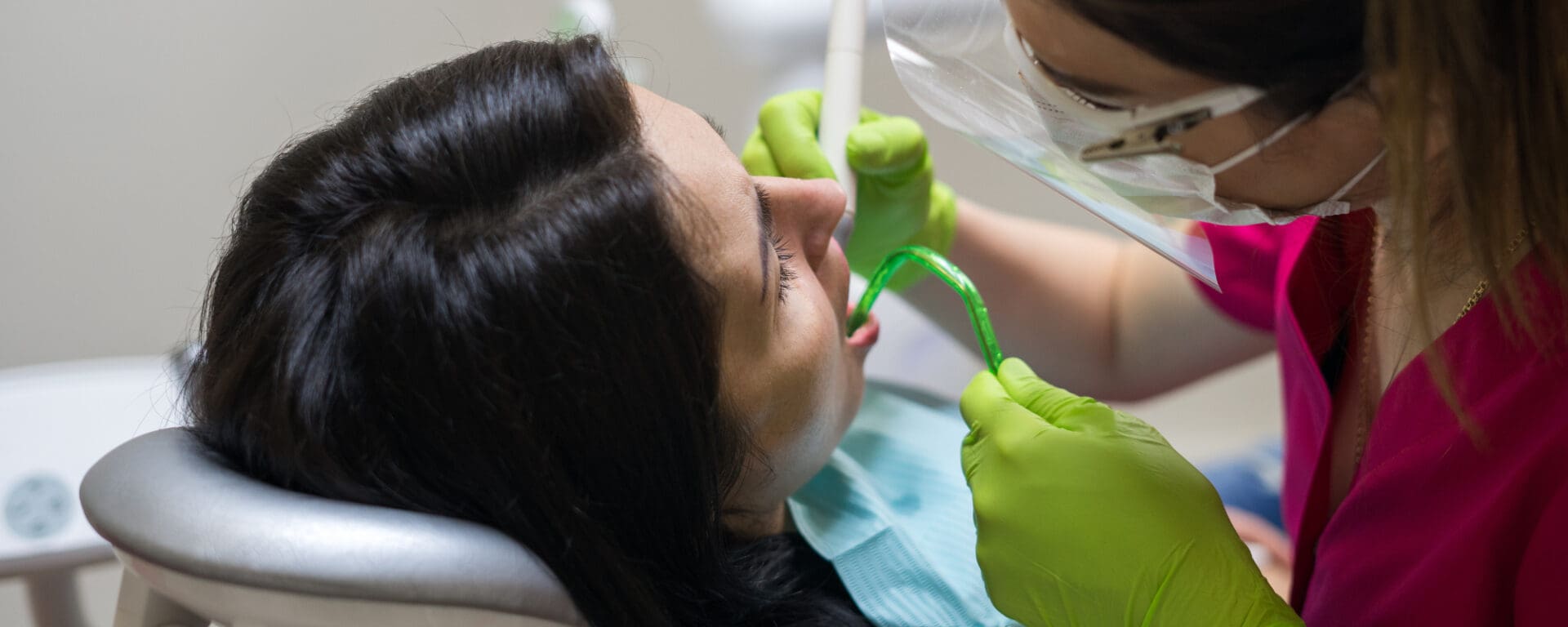What is periodontal disease?
Periodontal disease is a chronic condition that affects more than 1/2 of the adult population. Periodontal disease occurs when plaque and bacteria accumulate and create an inflammatory response in the surrounding tissue. As a result you get pockets that develop between the gum tissue and the teeth. As these pockets become deeper, bone loss ensues.
If not treated in a timely fashion, gum disease causes a variety of problems. This includes gum recession, bone loss, tooth mobility and ultimate tooth loss. It is imperative to receive treatment as soon as possible so that we can maintain the surrounding bone that supports the teeth.

Are there alternative treatments and adjuncts to periodontal disease?
The basis of treating gum disease relies on a thorough scaling and root planing (deep cleaning). After this is completed we have some adjuncts to help maintain gum disease. We can debride the periodontal pockets with laser therapy (LANAP). This promotes tissue regeneration and proper healing. In addition, we can place a local antibiotic paste (Arestin) into the deeper periodontal pockets to help fight off persistent bacteria and promote the healing process.
